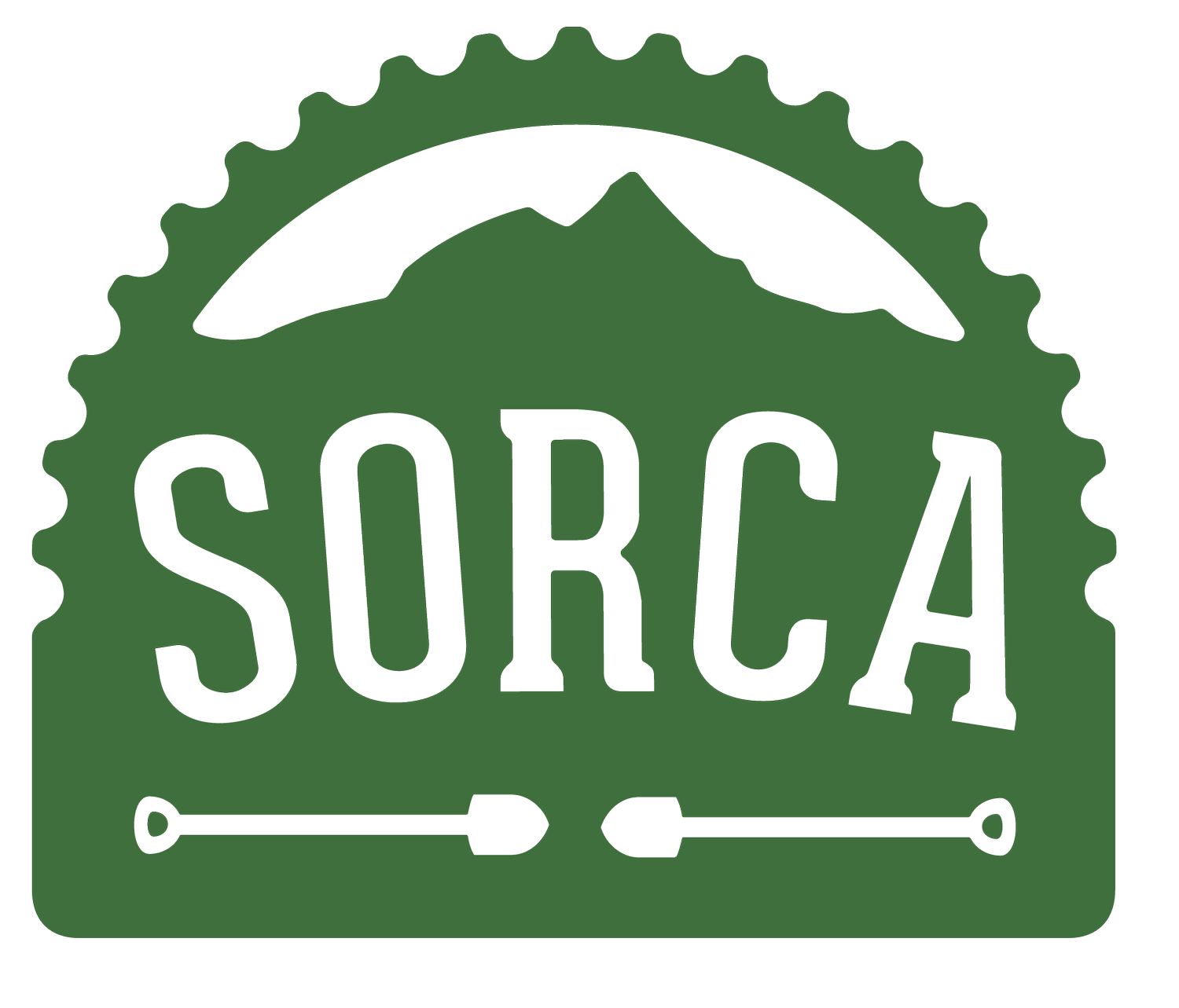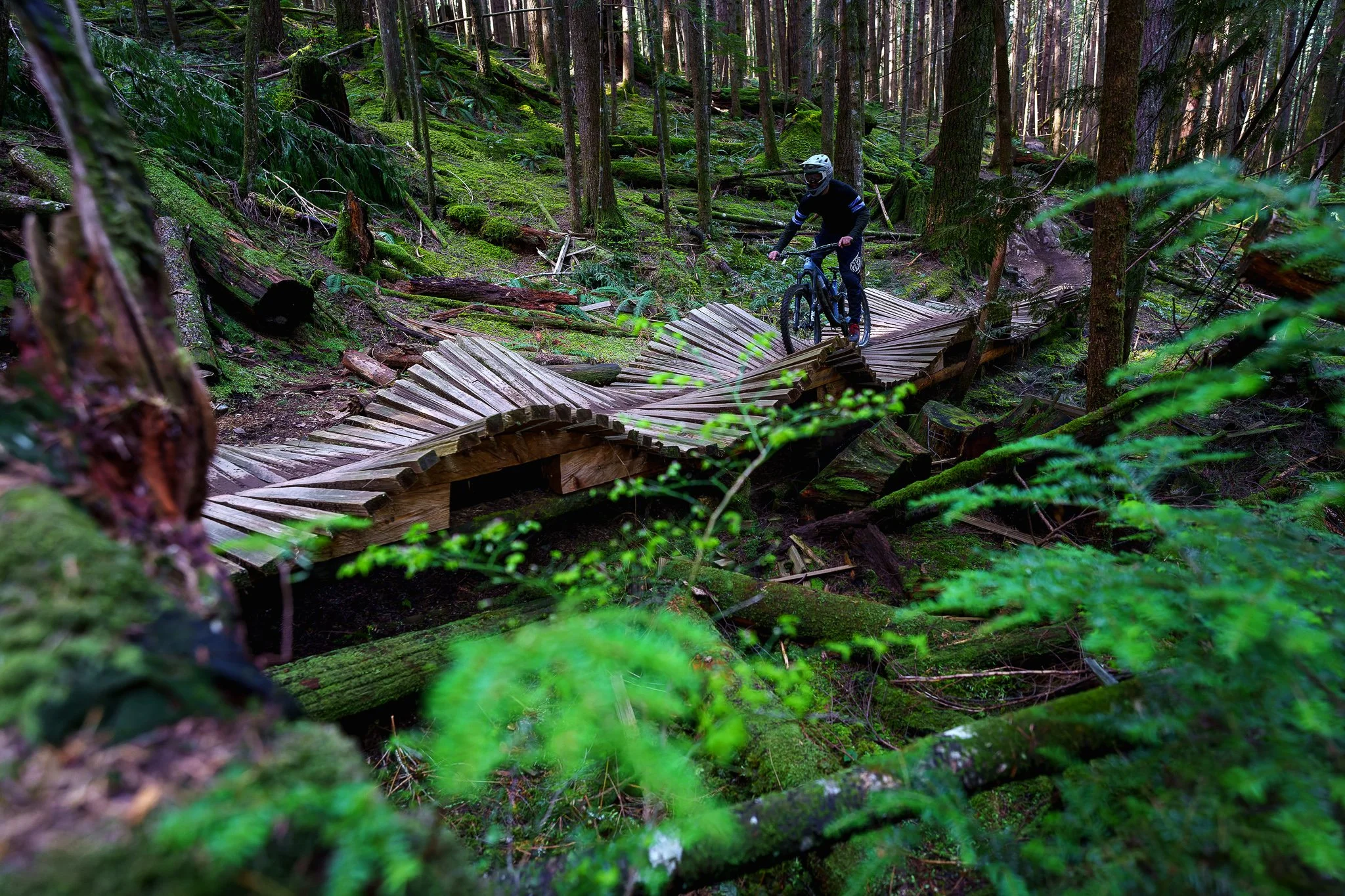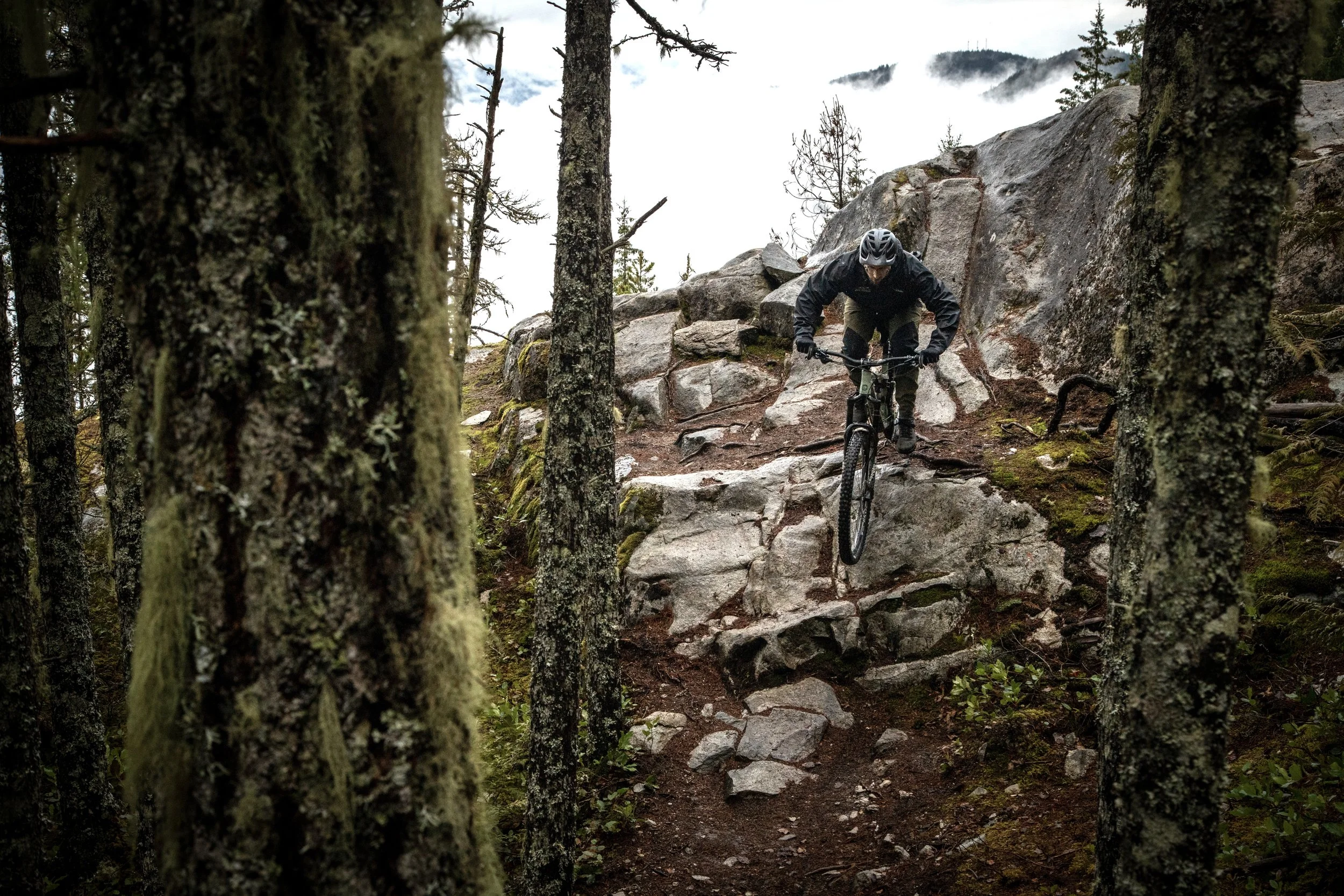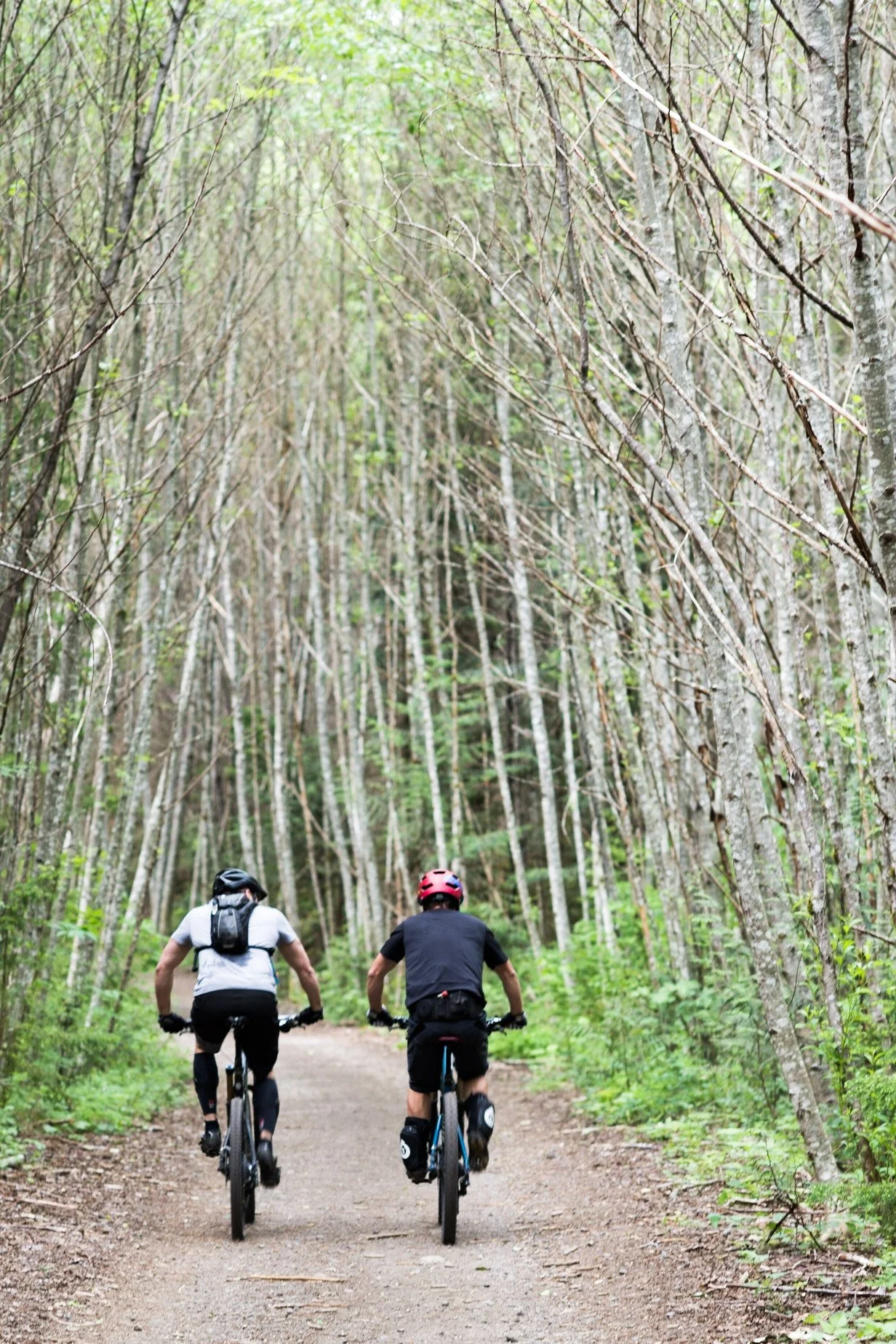A WORLD CLASS TRAIL NETWORK.
The Squamish trail network is an expansive mix of hand-built and machine-made trails. The region has been developed over the past 30+ years by a dedicated group of volunteers. A mix of volunteers, paid Trail Crew and contractors now maintain these world-class trails that span across private, crown, BC Parks, District of Squamish and Squamish Nation land.
Before you hit the trails, have a read…
A guide for EVERY trail user.
SORCA works closely with the Squamish Nation, District of Squamish (DOS), Crown Land recreation managers, and other community stakeholders to maintain the trails, manage land-use conflicts and uphold a common approach to trail etiquette. It is important that trail users are familiar with trail etiquette in order to enjoy these amenities safely and sustainably. In order to keep the trails fun and open for everyone to enjoy, show respect for your fellow trail users (human and wildlife) and stick to the following guidelines below.
-
What is Adaptive Mountain Biking?
Adaptive Mountain Biking (aMTB) encompasses a broad range of riders who typically cannot ride a standard mountain bike and require adaptations to a typical 2-wheeled bike. This includes handcycles, e-assist, bucket seats, modified 2-wheel bikes, and recumbent bikes.
SORCA believes everyone should be able to experience the joy of biking and access the incredible trail network. Although much work is needed, SORCA is developing adaptive-friendly trails and applying strategic modifications to existing trails to ensure all bikes and riders can access the outdoors and progress their skills.
Smarten Up, Not Dumbing Down. Through the efforts of our skilled volunteers, trail crew and contractor-built trails, maintenance, and repairs are being approached with adaptive bike designs in mind. A narrow bridge or an eroded bench cut often prevents aMTBs from shredding the trails freely. SORCA believes everyone should be able to discover the unique and classic trails of Squamish through informed design and inclusive planning.
First Time Visiting? We recommend you warm up and get a feel for Squamish trails on the wildly popular and easy-to-lap Miki’s Magic. With an open line of sight, minimal exposure, and smooth berms, Miki's allow riders to warm up, get familiar with the conditions and maybe catch some air. Need a picture for the ‘gram'? Rob and Cliffs Corners offer an unforgettable sunset lap view while breezing down some green flow. Feeling saucy? Rip over to Miki’s Extension or Cardrona for progressive blue lines with optional black jumps!
Questions? Feedback? We are excited to witness the growth and participation of aMTBs within our community. The enthusiasm and stoke of these riders motivate us to provide authentic and considerate trail planning and development. Our commitment to continuous improvement means always exploring new possibilities, seeking feedback, and collaborating with adaptive riders to improve our trails. Feel free to contact sierra@sorca.ca with comments, concerns, questions, or pictures of your dog.
Join us in making adaptive biking an integral part of our biking culture. Let's pedal towards a more inclusive future together!
-
Ride Within Your Ability | Can you stop safely? Do you understand the trail classification in our area? How strenuous are the climbs? What are the risks involved with the feature?
Earn Your Turns | Make a trails donation online. Volunteer at trail days. Buy a membership
Share The Trail | Be Bear Aware, www.bearsmart.com. Look out for others, especially, when descending. Slow down and communicate with others on foot when passing. Keep to the side when climbing.
Plan Ahead | Have you told anyone where you're heading? What are they going to do if you don't make it back on time? Have you got any food, water, tools or a first aid kit? Is your cell phone charged?
Expect The Unexpected | Pre-ride, Re-ride, or even walk away. The feature will be there the next time! Expect to encounter technical features on expert trails.
Closed Means Closed | Obey signage. Stay on the designated trails, no shortcuts! Avoid trail braiding and ride-arounds in wet areas.
Take It Home | You packed it in, you pack it out. Dispose of garbage and recycling at appropriate facilities.
-
Stay on the trails: Do not cut switchbacks or take shortcuts unless there is one specified.
Stay on the right on wider paths: Use common sense and give space when encountering others.
Pass on the left: Communicate kindly with the humans you encounter. Let them know you’re approaching and would like to get past. Who knows, you might even meet a new friend.
If you stop, move off the trail: If you find yourself wrapped up in the beauty of a grand vista, taking a rest, crushing a bar or doing some trailside bike mods, please clear the trail, so others can pass. Be aware of the forest and try to minimize your off trail impact.
Greet people you meet: We’re all outside for similar reasons. Say hi to your fellow trail goers. Ask them how their day is. Share information and enhance each other’s experience.
Groups yield to single or pairs of hikers/bikers: It’s harder for a group to get off the trail so often times singles will stop and let you all pass, but it’s their call. Communication is the key to success.
Travel in single file when in a group: Make sure everyone in your group understands what actions to take when encountering hikers, bikers, horses and wildlife such as bears.
When meeting a horse: Get off the trail on the downhill side. Horses will tend to bolt uphill when spooked. Also, you waiting on the uphill side looks more like a predator waiting to pounce. Quietly greet the rider and ask if you are ok where you are. stand quietly while the horses pass.
When you encounter a bear: Read this document about bears and biking.
Don’t leave any markers when hiking off-trail: Cairns, ducks, or little piles of rocks are not needed. markers tend to concentrate traffic, which creates unmanaged trail scars.
Read trail-head guidelines: There may be specific rules for the trail you are on, for example, a mountain bike descent trail.
When using downhill tracks, be courteous and communicate with those you meet and pass.
Keep your eyes and ears open: Use all your senses and your common sense. safety first.
-
Cyclists traveling uphill have the right of way.
Public trails are not a race course.
If you want to get the lead out, do it on a race day/night.
You must stop if you approach someone who is crossing a narrow bridge or negotiating a narrow piece of trail with limited space, coming up or going down.
Let faster riders pass you as soon as you can and when it is safe to do so, e.g. where there is a pull-out
Sometimes uphill bikers will prefer to stop and let you pass coming down so they can get a short break – the uphill biker should be allowed to make that decision.
Consider seasonal conditions and weather. With heavy rains, trails can turn into mud puddles or be affected by erosion. If you ride some trails before they are dry, you will damage the trail dramatically. Be patient. If a trail is open with a few snow patches, stay on the snow on the trail. Braiding a new trail causes extensive damage to an area.
-
Pack it in. Pack it out: Leave only tread marks. Take out any waste you or your pets create.
Need to go number 2? Use outhouses where possible. If you can’t hold it, level up your “pooping in the woods” game.
Take a photo as a momento of your adventure: Leave nature the way nature intended it. Take only photos. And make sure you’re not in the middle of the trail or obstructing other trail users.
Report Vandalism: If there is contact information at the trail-head, tell the managing agency about any destruction or management concerns or requirements that you notice.
Stop the spread: Mountain bikers can help prevent the spread of invasive plants by cleaning shoes, bikes and pets before leaving the trail-head or moving to a new trail-head. Learn more about how to Play Clean Go.
Thank you to WORCA for sharing their excellent etiquette content with us, to keep messaging consistent in the corridor.
-
Squamish is a major mountain bike destination. You will encounter mountain bikers on most trails as well as many hikers. You may also encounter trials motorcycles on some trails. Trials bike users built some of Squamish’s classic trails, which have been adopted over time into the broader off-road trail network. Many trails allow for motorized use. Please use common sense and respect when encountering other user groups.
-
E-Bike Education Background:
In British Columbia, electric bikes are identified as a ‘motor-assisted cycle’ or MAC, which means that the vehicle must be able to combine human pedal power with electric motor assistance. Riders must be 16 years old or older.
E-Bike Classification system
-> Class 1 e-bikes are limited to a top speed of 32 km per hour, a maximum continuous wattage output of 500 watts and the electric motor works only when the rider is pedalling. Class 1 e-bikes are allowed on bike paths and bike lanes and any trails that are shared with traditional, non-assisted bikes (aka acoustic or analog bikes). Class 1 e-bikes meet the definition of a motor-assisted cycle.
->Class 2 e-bikes are also limited to a top speed of 32 km per hour, but have throttles that work when you're not pedalling and are classified as motorized vehicles under the RSTBC e-bike policy. Most Class 2 e-bikes offer electrically assisted pedaling alongside throttles. Class 2 or 3 ebikes are generally permitted on roads designated for motor vehicles but not on mountain bike trails.
->Class 3 e-bikes can go up to 45 km per hour and must have a speedometer, but they may or may not have a throttle. Like class 2 bikes, they are classified as motorized vehicles under the RSTBC e-bike policy. Most areas let you take a Class 3 ebike into road lanes or a bike-only lane on the shoulder of the road (so-called curb-to-curb). Class 2 or 3 ebikes are permitted on roads designated for motor vehicles but not on mountain bike trails. A Surron would be considered a Class 3 ebike.
->Electric adaptive mountain bikes (aMTB) are a large category of wheeled recreational cycles consisting of hand cycles, recumbent leg cycles, tandem bicycles, etc. focused on providing specifically adapted opportunities for individuals who cannot use two-wheeled bikes due to disabilities, special needs, or other physical or neurological challenges. aMTB’s are allowed on bike paths and bike lanes and any trails that are shared with traditional, non-assisted bikes (aka acoustic or analog bikes).E-Bike Etiquette & tips for all trail users
->E-bikes enable faster uphill riding, so pass respectfully and beware of oncoming riders. Please don't ride "downhill primary" trails (see Trailforks) in the uphill direction.
->When descending a trail, keep your ears open behind you for riders approaching quickly and simply pull over to let a faster rider pass
->Standard etiquette - Link here
->RMOW tips,rules and etiquette

trail in need of some tlc?
let us know.
With hundreds of kilometers of trails to monitor and maintain, we rely on volunteers to let us know when something needs fixing. As a rider, you can contribute to this by submitting trail reports. If you see a tree down across a trail, or some other feature that needs maintenance, let us know! Trail reports can be submitted one of three ways; via the Trailforks reporting function, our Facebook Trail Maintenance Group, or by emailing us, here.







